As the first herald of spring, crocus flowers provide a pop of colour and joy just when we think winter will go on forever. The sleepy bees flock to them as spring food, as the crocus soak in the crisp sunlight. Crocuses are super simple to grow and care for, and the time to plant them is NOW!
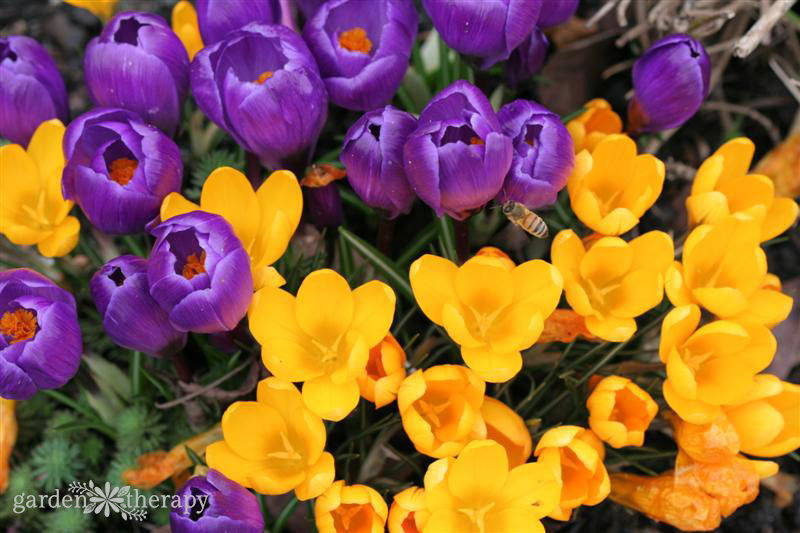
Crocuses are beloved by many simply because they’re the first spring flower to emerge, even in the coldest of climates. They’re pure joy!
Crocus flowers grow from bulb-like corms, producing flowers for years on end. They multiply on their own, creating waves of small purple and yellow flowers throughout lawns and garden beds.
I’ve planted crocus corms many times, most recently as a sidewalk project at my previous rental house and in my lawn bulb mixture at my current house. The work of planting in the fall is well worth it come springtime!
Here’s what you need to know about crocus flowers, including when, where, and how to plant them, as well as care and naturalizing tips.
This post will cover…
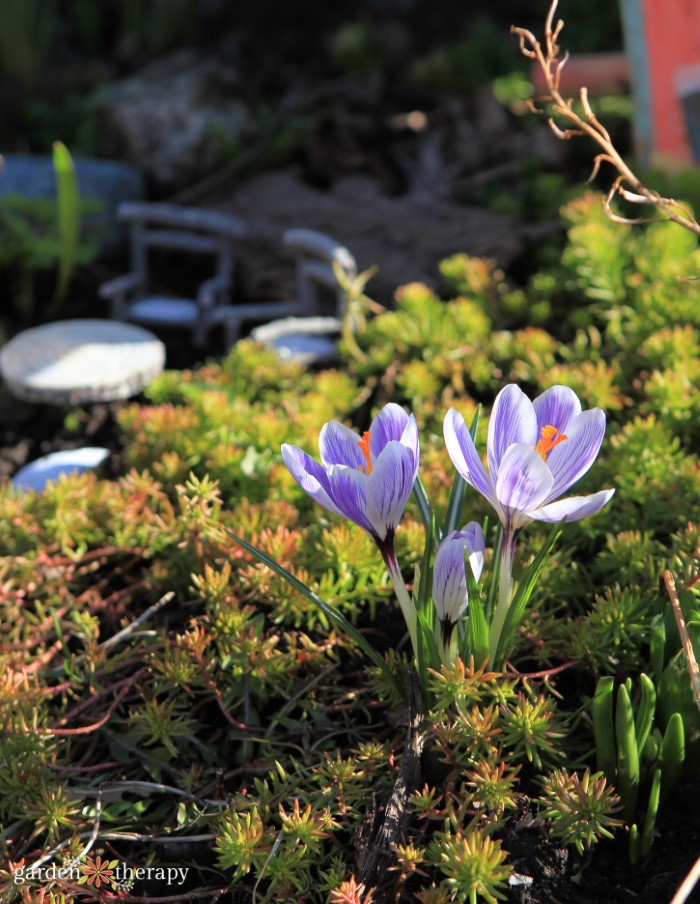

Autumn vs. Spring Crocus
Everyone loves the spring crocus, as the first flower to emerge after a cold winter. We cherish the small blooms and know that soon, more flowers will begin to awake.
But did you know there are also autumn crocus? While also a showstopper and beautiful flower, they don’t get nearly as much praise simply because they bloom in the fall when we aren’t lacking other flowers.
While both spring and autumn crocus are called crocus, they’re actually not related! Let me introduce you to both.
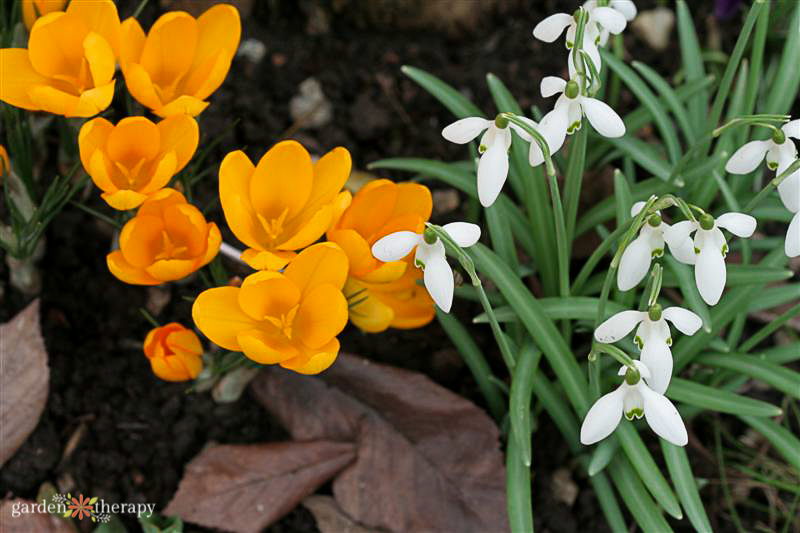

Autumn Crocus
As the name would suggest, autumn crocus bloom in early fall as opposed to spring. Autumn crocus refers to a variety of hybrids in the Colchicum genus, which belongs to the lily family. The Colchicum autumnale is the most common autumn crocus, which boasts light pink-purple and sometimes white flowers.
They’ve earned the nickname of ‘naked ladies’ since they bloom with no leaves, producing 1 to 10 flower stalks per corm. The leaves grow in the spring and go dormant in the early summer, but must be left alone to help fuel the corms for their fall bloom.
The corms should be planted by mid-summer to ensure a fall bloom, though they naturalize and will return year after year. The weird timing of planting these corms means they’re often forgotten about.
Autumn crocuses are hardy to zones 5-9. The corms are toxic to humans and animals.
Saffron Crocus
Another species is the saffron crocus, Crocus sativus, which is also called the autumn crocus by some. Of course, this is the flower that produces the highly prized saffron spice. It is also a fall-flowering plant.
Spring Crocus
The spring crocus is what most people are familiar with, and the one that people cherish the most when temperatures are still too cool for other flowers. They can bloom from January to April, depending on how harsh your winter is.
The spring crocus belongs to the iris family, with over 80 crocus species in Crocus spp. They bloom in many colours, including purple, yellow, orange, pink, white, and even blue. However, purple and yellow are the most common ones I see.
They also grow from a corm and naturalize in the garden. Spring crocuses are hardy from zones 3-8.
The remainder of this guide will focus on spring crocus, since that’s what most people are interested in growing. But it’s important that you know there is an autumn crocus, so you don’t get them mixed up.
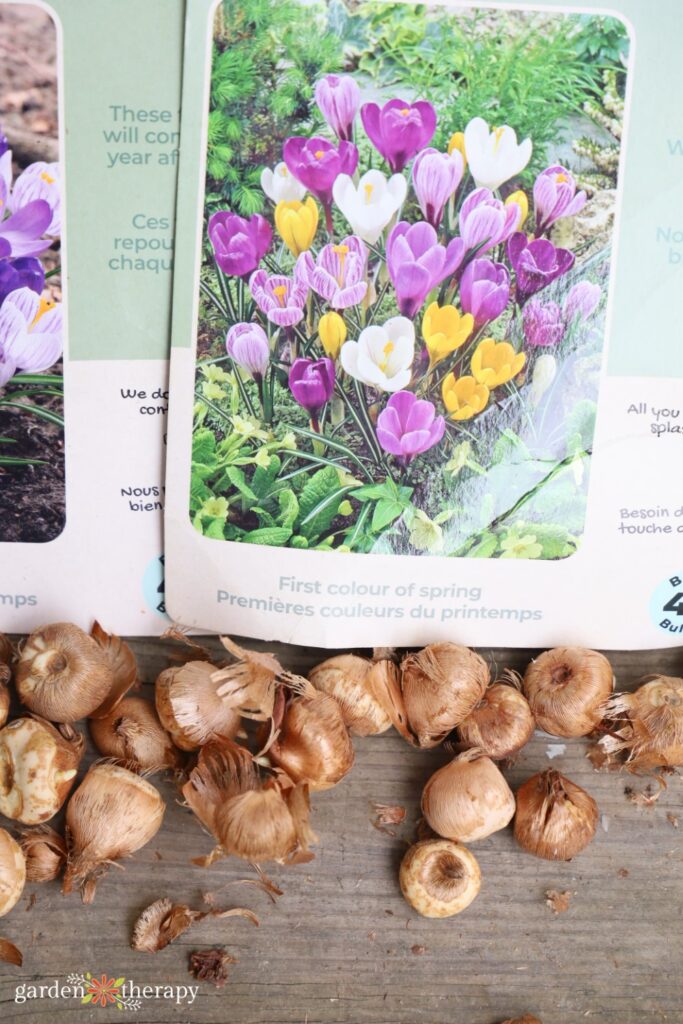

Planting Spring Crocus
Since crocuses are smaller flowers, they look best planted en masse. Think 100-150 corms minimum! Larger corms produce more flowers, so keep this in mind when purchasing crocus corms.
While you can plant crocus from seed, it can be difficult and take years for the plant to produce flowers. So almost everyone buys and plants the corms.
Spring crocus should be planted in early fall, ideally eight weeks before the first frost.
Crocuses need well-drained soil so the corm doesn’t rot. Choose a location that receives full sun. Avoid planting in shade, though they can tolerate partial shade if necessary.
But since crocuses are early bloomers, larger trees and shrubs haven’t leafed out yet to block sunlight, making areas that are typically shaded still a great location option.
Plant crocus corms with the pointy end up. They should be planted four inches deep to the top of the corm, approximately two inches apart. Plant them in clusters, grabbing a handful at a time.
Water after planting if there is no natural moisture. Snow cover is usually good and all you need. You want to avoid overwatering, so you don’t rot the corm
Pro tip: Try layering crocus with other bulbs, including hyacinth, tulips, and daffodils. Since they don’t have lots of foliage and flower early on, they’re done by the time the other bulbs are ready. Plant the corms according to the depth specified on the packaging, with the crocus on top.
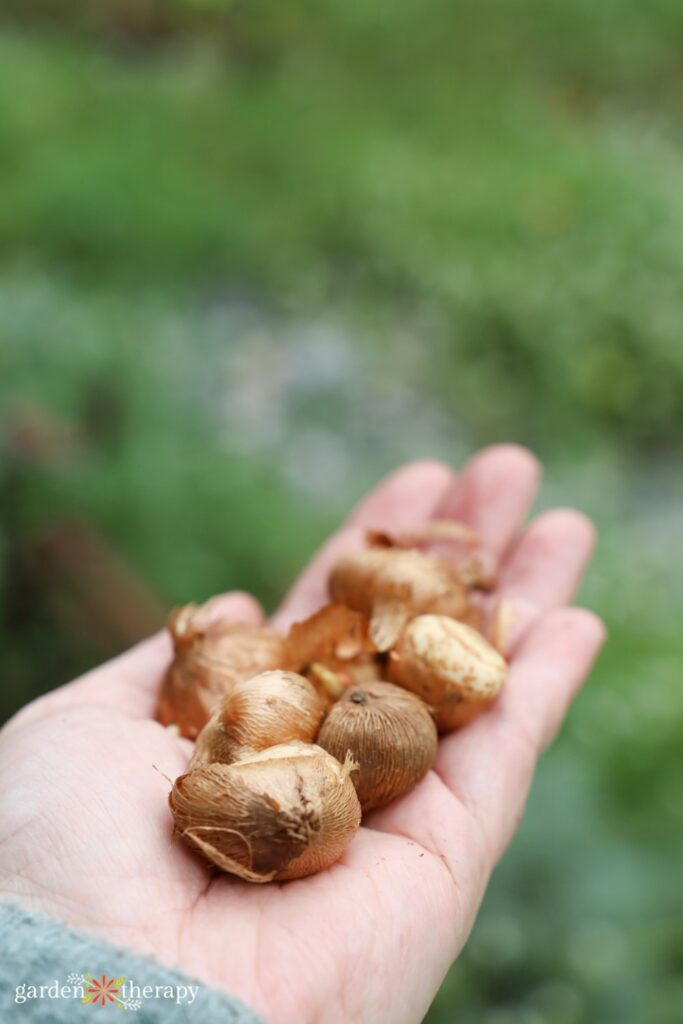

Caring for Crocus Flowers
Crocus need very little care once they have been planted. Ideally, you just need to leave them alone!
Crocus require 12-15 weeks of cold temperatures, so they need to grow in cold places.
Do not cut the flowers for six weeks after the flowering period. Ideally, the foliage should be fully yellow before you remove it, as the foliage will charge the corm for next year.
Once cut, leave the corms alone. They prefer dry soil in the summer. They may need water if it’s been a very dry winter and there’s no snow cover, but they’re usually okay without any supplemental watering.
Fertilizer is usually not necessary. I add layers of compost and leaf mulch to all my garden beds, and that’s all my perennial plants typically need.
Crocus flowers will only open when there is sun. They will close at night and in rainy weather.
Naturalizing Crocus in Lawns
Crocus flowers are one of the best “bulbs” to use for naturalizing, especially in lawns. This means they will naturally propagate and spread themselves. As the plant gets older, it will produce offshoots around the main corm. Baby corms will grow in clusters around the main corm.
If going for a naturalized lawn look, you’ll want to scatter them by grabbing handfuls and planting them where they fall. To really get an amazing display in the spring, you’ll want 125-150 corms for every square meter.
After 3-5 years, flowering may decrease. This means your crocuses have crowded themselves out. You may need to gently dig them up with a spade and separate the baby corms from the main corm. Move the baby corms, spreading them out. Divide crocus right after they’ve finished flowering, so you know where the corms are.


FAQ About Crocus Flowers
Small mammals like squirrels, rabbits, mice, and gophers like to munch on crocus corms, especially after planting. They’re drawn to the freshly dug soil, so adding some mulch or leaves on top can help to hide it. You can also protect newly planted corms by covering them with hardware cloth (works better than chicken wire).
My philosophy? Squirrels are going to eat some of the corms, and that’s okay. I plant knowing that not all of them are going to make it.
Spring crocus bloom in late winter and early spring, anywhere from January to April, depending on how harsh your winter is. Autumnal crocus flowers in early fall, including the saffron crocus.
Spring-blooming crocus should be planted in early fall, ideally 8 weeks before the first frost. For autumn crocus, you want to plant them by mid-summer for fall blooms.
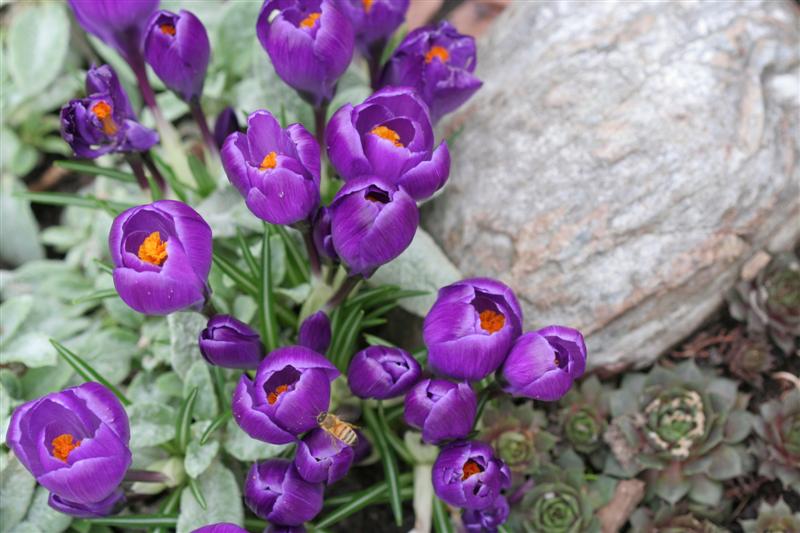

More Tips for Planting Fall Bulbs
A city girl who learned to garden and it changed everything. Author, artist, Master Gardener. Better living through plants.

